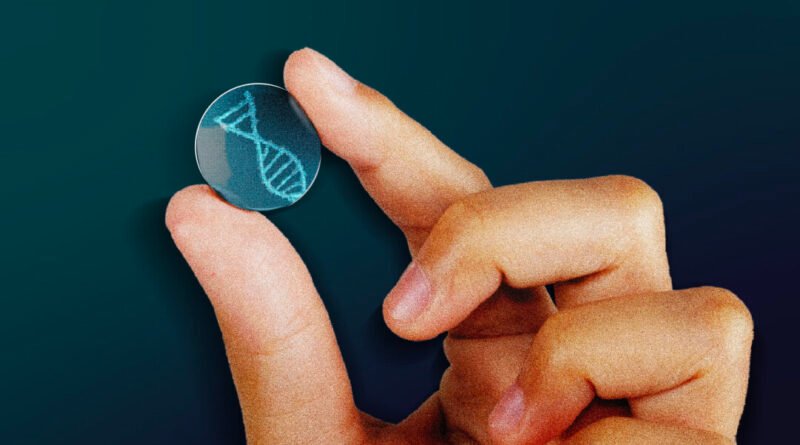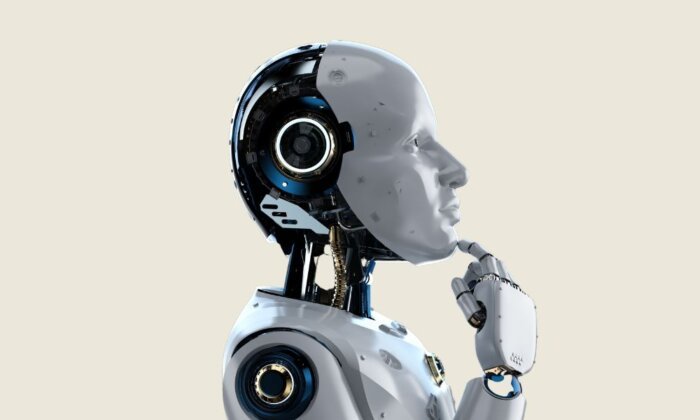Researchers archive human DNA using 5D crystals.
Human genome is being preserved in case of species extinction.
In what seems like a scenario straight out of science fiction, researchers at the University of Southampton in Great Britain have successfully stored the complete human genome on a crystal with a predicted lifespan of billions of years.
This groundbreaking work is aimed at potentially serving as a genetic blueprint for reviving humanity in the distant future, should our species face extinction. The genetic information has been engraved onto a recently developed, highly durable crystal with exceptional resistance to degradation.
“I believe that with the rapid advancements in technology and science, what may currently seem like science fiction could very well be achievable in the future,” said Peter Kazansky, the leader of the research team and a professor in the Optoelectronics Research Centre at the University of Southampton, in an interview with The Epoch Times.
A Blueprint for Resurrection
The researchers have stored the entire human genome on a 5D memory crystal, which can withstand extreme temperatures up to 1,832 degrees Fahrenheit and harsh freezing conditions.
A genome contains all the genetic information of a living organism in the form of DNA nucleotide sequences.
Filing Data for Eons
The concept of preserving humanity’s genetic code arose from the need to create a lasting storage medium capable of safeguarding vital information for future generations, explained Kazansky.
“As the volume of data continues to grow, the challenge of ensuring its long-term preservation becomes more pressing,” added Kazansky. “The human genome stands as the pinnacle of this preservation effort.”
The scientists are also working on archiving the entire contents of Wikipedia and other records of human history and accomplishments. They mentioned in a press release that although creating humans, plants, and animals solely from genetic information is currently not feasible, significant progress has been made in synthetic biology in recent years. They cited the creation of a synthetic bacterium in 2008 as an example of advancements in this field.
Breaking the Hardness Record
The 5D memory crystals, developed at the Optoelectronics Centre, hold the Guinness World Record for being the most durable data storage material. Kazansky is credited as one of the creators of this substance. These crystals are referred to as “5D” because their encoding involves two optical dimensions and three spatial coordinates.
These crystals are capable of storing up to 360 terabytes of information for approximately 13.8 billion years. Each terabyte can hold around 75 million document pages, making 360 TB equivalent to about 27 billion document pages. The crystal could house approximately 450,000 books, each containing 200 pages with 350 words per page.
“This invention has been hailed as particularly significant, as no other existing storage medium can guarantee the safe accessibility of data to future generations,” as stated on The Guinness World Records Website.
Importance of Human Life and Knowledge
Kazansky mentioned that there might be future civilizations capable of utilizing these codes, demonstrating an advanced level of understanding to interpret and reconstruct genetic information.
With current news headlines highlighting ongoing conflicts and the potential for large-scale wars, this preservation work could prompt world leaders to contemplate the fate of humanity, added Kazansky. “Our work underscores the vulnerability and value of human life and knowledge,” he remarked.
Despite the team’s efforts to conserve the genetic legacy of humanity, Kazansky expressed optimism about our ability to endure as a species. “While the possibility of extinction looms in the distant future due to unforeseen catastrophic events, our project focuses on preserving our legacy regardless of what might transpire,” he commented.
James Spencer, a theologian and author of the book “Useful to God,” expressed his disbelief in humanity facing extinction.
“From a biblical and theological standpoint, we envision a new creation populated by a redeemed human race,” Spencer shared with The Epoch Times.
Spencer, who believes in the eternal destiny of humanity, raised concerns about potential differences in character among a new generation of people in the future.
“It is unclear whether restarting the human race would involve a recognition of concepts like human dignity. According to Christian theology, humans are created in the image of God,” Spencer explained. “Even if it were feasible to restart the human race using genetic methods, it is uncertain whether replicating genetic patterns would result in the same kind of beings. Manipulating genetics to produce beings identical to today’s humans does not guarantee an understanding or replication of humanity as we know it. Certain essential elements could be absent.”
The Memory of Man Archive is structured to initiate the rebirth of the human race upon the discovery of the crystal, as stated by Kazansky. Precise coordinates for locating the crystal would be stored in numerous locations to aid those interested in this endeavor.
“While salt mines are known to slowly contract due to the pliability of salt rock, this phenomenon is unlikely to damage the archive itself,” Kazansky assured. “Over time, some chambers may remain intact, detectable through specialized equipment. Alternatively, natural erosion might eventually bring the archive back to the surface in millions of years.”






